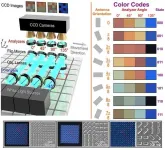Detailed findings of this study can be found in a new article, "A randomized controlled trial of the X-Stop interspinous distractor device versus laminectomy for lumbar spinal stenosis with 2-year quality-of-life and cost-effectiveness outcomes," published today in the Journal of Neurosurgery: Spine.
Background: Lumbar spinal stenosis is the term used to describe narrowing of the spinal canal within the lower lumbar spine. This narrowing, often a sign of aging, may be due to bone spurs resulting from arthritis, a bulging spinal disc, or thickened ligaments. As the spinal canal narrows, spinal nerves passing through it can become compressed and inflamed, leading to weakness, numbness, and/or pain in the lower back and legs, and, occasionally, bladder or bowel dysfunction.
In many cases, lumbar spinal stenosis can be managed nonsurgically by use of medicines to reduce swelling and pain, physical therapy, and specific exercises. However, in some cases, these are ineffective and spinal surgery is recommended. Most often, laminectomy is performed by removing a portion of bone on the back of the lumbar vertebra at the site of compression, allowing the spinal canal to expand and relieving pressure on the spinal nerves.
Traditional laminectomy is open surgery usually requiring general anesthesia and a few days in the hospital. X-Stop® surgery is less invasive. Often placed after administration of a local anesthetic agent, the X-Stop® Interspinous Process Decompression System (Medtronic), composed of a titanium alloy, is inserted at the back of lumbar vertebrae, between the spinous processes of adjacent vertebrae at the site of spinal canal narrowing. Once there, the device prevents the spine from bending too far backward, compressing spinal nerves and causing discomfort.
Present Study: In this article, the authors describe a prospective, open-label, randomized controlled trial, "Cost-Effectiveness and Quality of Life After Laminectomy or X-Stop (CELAX)," in which open laminectomy and use of the X-Stop® device for the treatment of lumbar spinal stenosis were compared. The primary outcomes investigated were cost-effectiveness and long-term quality of life. The study was conducted at three medical centers in the UK.
Between 2010 and 2014, 47 patients who experienced neurogenic caudication from lumbar spinal stenosis and whose symptoms improved on forward flexion were randomized into one of two treatment groups: 26 patients underwent laminectomy and 21 patients received the X-Stop® device. The surgical procedures were performed by consulting and attending surgeons as well as by residents. General anesthesia was used in all cases.
Eighteen women and 29 men, ranging in age from 47 to 86 years, participated fully in the clinical trial. During the course of the study, five patients in the X-Stop® group crossed over into the laminectomy group.
Quality of life for the patients was measured using EQ-5D instruments (EuroQuol Group) before the procedure and again at 6 months, 1 year, and 2 years post-procedure. Costs per patient were based on the cost of time in the operating room plus the cost of the hospital stay.
Six months after treatment, the mean quality of life in both the laminectomy and X-Stop® groups was significantly better than that measured at baseline (pretreatment). At 1 and 2 years post-treatment, the improved quality of life demonstrated in the laminectomy group continued to be significantly better than baseline; in the X-Stop® group, quality of life remained improved but not significantly so.
In this clinical study, the mean cost for a laminectomy was £2712 ($3316) and that for the X-Stop® procedure was £5148 ($6295). Surgery took nearly twice as long when laminectomy was performed (mean 122 minutes compared with 66 minutes for X-Stop® insertion). The mean length of hospital stay was comparable: 4.3 days in the laminectomy group and 4.2 days in the X-Stop® group. The increase in the cost of the X-Stop® procedure was due in large part to the cost of the device.
There were four complications in the laminectomy group, although only one required a return to the operating room. There were two complications in the X-Stop® group, both of which necessitated removal of the device and a switch to laminectomy. Treatment with the X-Stop® device was later found to be inadequate in three patients, who then also underwent surgery for laminectomy and removal of the device.
Additional data on primary and secondary outcomes are provided in the article and in a supplemental file online.
The authors conclude that laminectomy is more cost-effective than the X-Stop® device for the treatment of lumbar spinal stenosis. The X-Stop® device improved quality of life but less so than laminectomy. Nevertheless, the interspinous distractor device still provides a service. The authors suggest that the X-Stop® "should be reserved for cases in which a less-invasive procedure is required. There is no justification for its regular use as an alternative to decompressive surgery."
When asked about the findings of this study, Dr. Anouk Borg, first author of the paper, responded, "It is very encouraging that both treatments resulted in an improvement in the quality of life for our patients. The X-Stop® device is an attractive option as it is less invasive than standard open surgery. It is also a faster procedure and it is reversible. The device can be removed if required. However, we found that open laminectomy is a more cost-effective procedure in the UK, with sustained improvement in quality of life up to the trial endpoint at 2 years."
INFORMATION:
This article is accompanied by an editorial by Drs. Marjorie C. Wang and Mohammed Y. T. AlGhamdi.
Article: Borg A, Hill CS, Nurboja B, Critchley G, and Choi D: A randomized controlled trial of the X-Stop interspinous distractor device versus laminectomy for lumbar spinal stenosis with 2-year quality-of-life and cost-effectiveness outcomes. J Neurosurg Spine, published ahead of print February 2, 2021. DOI: 10.3171/2020.7.SPINE20880.
Clinical trial registration no. ISRCTN88702314 (http://www.isrctn.com).
Disclosure: Dr. Borg received clinical or research support from Medtronic for the study described.
Editorial: Wang MC, AlGhamdi MYT: Editorial: Interspinous spacers for lumbar stenosis: time for obsolescence? J Neurosurg Spine, published ahead of print February 2, 2021. DOI: 10.3171/2020.8.SPINE201205.
Disclosure: Dr. Wang is a consultant for Medtronic, Titan, Biologics, and Zimmer Biomet. Dr. AlGhamdi has a clinical fellowship grant from NREF.
For additional information, contact: Ms. Jo Ann M. Eliason, Communications Manager, JNS Publishing Group, One Morton Drive, Suite 200, Charlottesville, VA 22903; Email joanneliason@thejns.org; Phone 434-982-1209.
The Journal of Neurosurgery: Spine is a monthly peer-reviewed journal focused on neurosurgical approaches to treatment of diseases and disorders of the spine. It contains a variety of articles, including descriptions of preclinical and clinical research as well as case reports and technical notes. The Journal of Neurosurgery: Spine is one of six journals published by the JNS Publishing Group, the scholarly journal division of the American Association of Neurological Surgeons. Other peer-reviewed journals published by the JNS Publishing Group each month include Journal of Neurosurgery, Journal of Neurosurgery: Pediatrics, Journal of Neurosurgery: Case Lessons, Neurosurgical Focus, and Neurosurgical Focus: Video. All six journals can be accessed at http://www.thejns.org.
Founded in 1931 as the Harvey Cushing Society, the American Association of Neurological Surgeons (AANS) is a scientific and educational association with more than 10,000 members worldwide. The AANS is dedicated to advancing the specialty of neurological surgery in order to provide the highest quality of neurosurgical care to the public. All active members of the AANS are certified by the American Board of Neurological Surgery, the Royal College of Physicians and Surgeons (Neurosurgery) of Canada, or the Mexican Council of Neurological Surgery, AC. Neurological surgery is the medical specialty concerned with the prevention, diagnosis, treatment, and rehabilitation of disorders that affect the entire nervous system including the brain, spinal column, spinal cord, and peripheral nerves. For more information, visit http://www.AANS.org.



